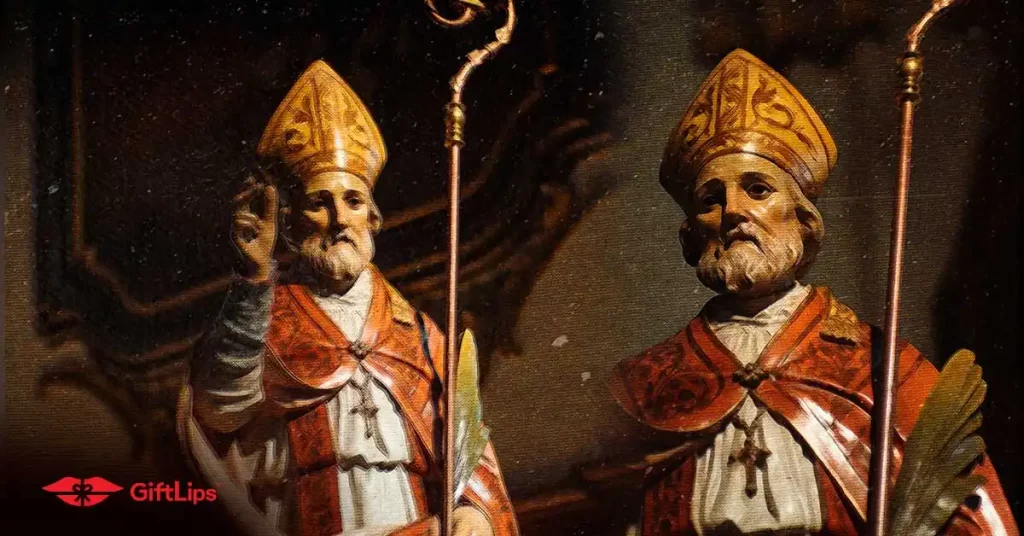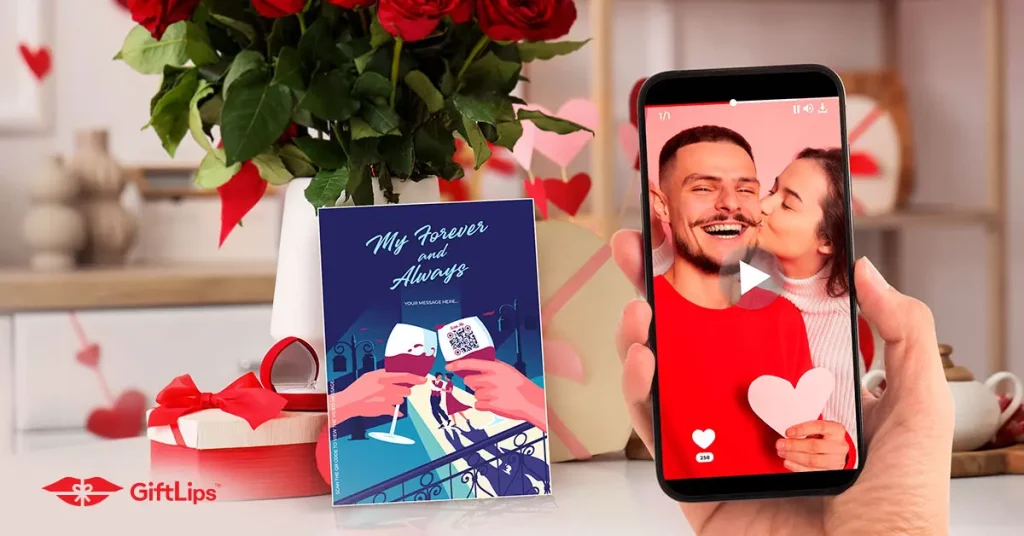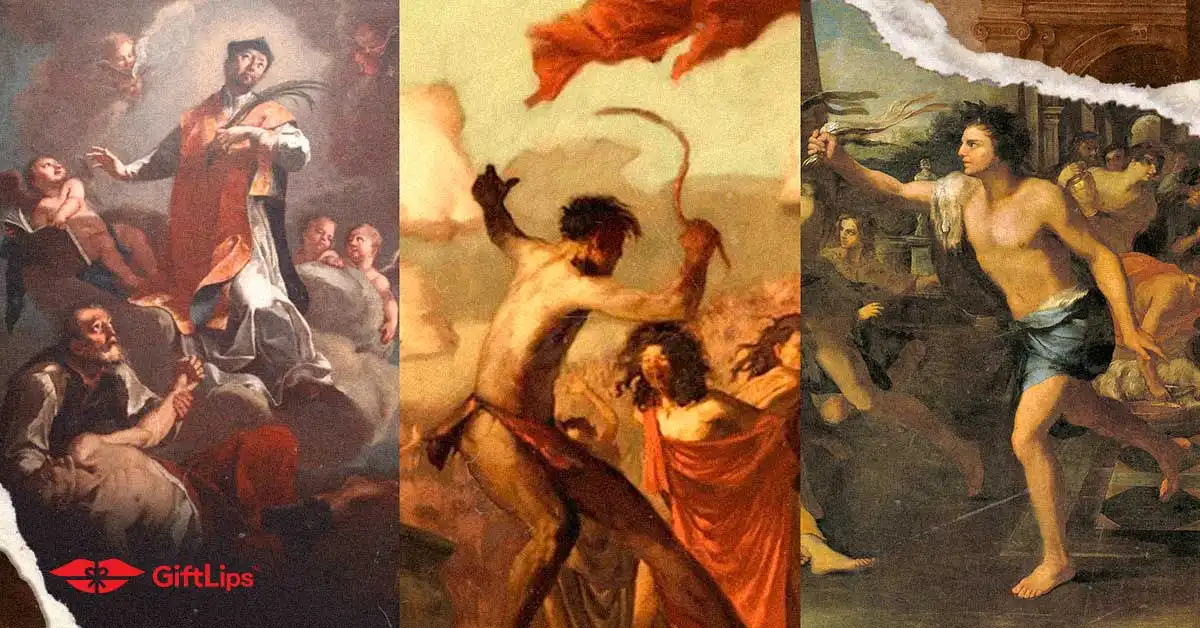Did you know the history of Valentine Day is more than a tale of chocolates and roses?
Picture this: a Roman priest secretly officiating marriages, a medieval knight penning poetic verses to his beloved, and today’s generation creating video greeting cards to express their love.
Each chapter of Valentine’s Day is filled with intrigue, passion, and creativity.
Valentine’s Day is more than a commercial holiday; it celebrates love’s enduring power across centuries and cultures.
In this blog, we’ll take you on a journey through the fascinating history of Valentine’s Day, uncover its evolution, and share quirky, fun facts that make it one of the most beloved holidays worldwide.
What is the purpose of Valentine’s Day?

Valentine’s Day is more than just a day for exchanging chocolates, roses, and love notes, it’s a celebration of human connection, affection, and the many forms of love that enrich our lives.
Today, the purpose of Valentine’s Day has expanded to include creative and personalized ways to show affection.
From virtual dates and customized video greeting cards to social media shoutouts. The day allows people to express their emotions in genuine and unique ways.
Ultimately, Valentine’s Day reminds us of the beauty of love in all its forms.
At its core, the purpose of this day is to honor and express love in all its dimensions, whether romantic, platonic, or familial.
It’s not just for couples; on this day, you can also send friendship cards and remind your friends how much they mean to you.
It celebrates what makes us human, our ability to connect, care, and create meaningful relationships that enrich our lives.
The History of Valentine Day
Mythology and Ancient Rome: Where It All Began
The history of Valentine Day’s roots stretch back to ancient Rome, where mid-February was synonymous with Lupercalia, a raucous fertility festival.
This pagan celebration honored Faunus, the god of agriculture, and included rituals to ensure prosperity and fertility for the coming year is the origin of Valentine’s Day.
One of the more peculiar customs involved single men and women drawing names to pair up for the festival. Sometimes, these matches led to love, and other times, well, not so much.
As Christianity spread, these pagan practices were reimagined to align with the Church’s teachings, paving the way for the Valentine’s Day we know today.
St. Valentine: The Man, the Myth, the Legend

Here’s where things get mysterious: there isn’t just one St. Valentine, there are several.
The most popular legend involves a Roman priest who secretly married couples to defy Emperor Claudius II’s ban on marriage.
Another tale speaks of a Valentine who helped Christians escape Roman persecution and fell in love with his jailer’s daughter. Before his execution, he reportedly sent her a letter signed “Your Valentine.”
The true identity of St. Valentine remains unclear, but his association with love and sacrifice turned him into a symbol of romance, setting the stage for centuries of celebration.
Evolution of Valentine’s Day Traditions
Medieval Europe: Love and Chivalry
By the Middle Ages, Valentine’s Day was firmly linked to romance. This connection was solidified by Geoffrey Chaucer, who mentioned Valentine’s Day in his 1382 poem Parlement of Foules.
The concept of courtly love flourished, with knights performing grand gestures to win the favor of their ladies.
Handwritten love notes became popular during this era, and the exchange of poems and declarations of affection became common.
These early tokens of love were the precursors to today’s Valentine’s Day cards.
Victorian Era: When Love Became an Art Form
The Victorian era took Valentine’s Day to dazzling new heights. Elaborate cards adorned with lace, ribbons, and intricate designs became the holiday hallmark.
Sentiments of love were celebrated with elegance as couples exchanged equal parts romantic and artistic cards.
This period also marked the rise of commercial Valentine’s Day celebrations. Companies began mass-producing cards, turning the holiday into a cultural phenomenon.
Modern Times: From Roses to Digital Love
The 20th and 21st centuries brought new traditions and technologies to Valentine’s Day. The holiday evolved beyond romantic partners, expanding to include friends, family, and even pets.
Roses, chocolates, a few thinking-of-you messages in a card, and candlelit dinners became staple gifts, but technology introduced exciting new ways to celebrate.
Social media allowed couples to publicly declare their love celebration, while online dating platforms made it easier to find that special someone.
Valentines Day greeting cards have emerged as a modern twist, combining personalization and creativity to capture the essence of love in the digital age.
Fun Facts About Valentine’s Day
If you thought you knew everything about the history of Valentine Day, think again! Here are some surprising and quirky facts:
- Candy Crush: Over 8 billion conversation hearts are produced annually, making them one of the most popular Valentine’s Day treats.
- Roses Reign Supreme: Approximately 250 million roses are grown yearly just for Valentine’s Day. Red roses symbolize love and passion, making them a timeless surprise gift for the season.
- Chocolate Love: Richard Cadbury, a 19th-century chocolate maker, was the first to sell chocolates in heart-shaped boxes, sparking a trend that endures to this day.
- Around the World: In Japan, women give chocolates to men on Valentine’s Day, while men reciprocate a month later on “White Day.” In Denmark, friends exchange pressed white flowers called “snowdrops.”
- Record-Breaking Weddings: The largest mass wedding on Valentine’s Day involved over 6,000 couples in Seoul, South Korea, setting a Guinness World Record.
Did you know?
- Valentine’s Day is the busiest day of the year for florists.
- Approximately 1 billion Valentine’s Day cards are exchanged worldwide annually.
- The heart-shaped box of chocolates is a relatively modern invention, dating back to the early 20th century.
- In Japan, women traditionally give chocolates to men on Valentine’s Day. A month later, on “White Day,” men reciprocate with gifts.
Celebrating Valentine’s Day with Video Greeting Cards

While traditional cards are beautiful, a video greeting message takes the art of love to new heights. They allow you to craft a personalized message with photos, videos, and heartfelt words.
Why Choose Video Greeting Cards?
- Personal Touch: Tailor your digital gift message to your loved one’s unique personality and shared memories.
- Emotional Impact: Combining visuals and voiceovers creates a deeper connection.
- Creative Freedom: Add music, animations, and themes to make your card unique.
Ready to create your own video greeting card? GiftLips makes it easy to design a video gift that is as special as the recipient.
It’s a modern way to show you care while preserving memories that last a lifetime.
A Timeless Celebration of Love
The history of Valentine Day is a testament to love’s enduring power.
From ancient Roman rituals to handwritten medieval notes, from Victorian lace cards to today’s digital greetings, the essence of the holiday remains the same: celebrating the connections that make life meaningful.
Whether you’re planning a romantic dinner, exchanging heartfelt gifts, or crafting a video message, remember that the thought behind the gesture is what truly matters.
As we embrace this year’s Valentine’s Day, let’s celebrate romantic love and all forms of affection that enrich our lives.
Share your favorite Valentine’s Day traditions or stories, and head to GiftLips. We’d love to hear from you!
Happy Valentine’s Day!
FAQ
We celebrate Valentine’s Day to honor love and affection in all its forms. The holiday traces its roots to ancient Roman traditions and early Christian history.┬á
Beyond its historical and romantic origins, Valentine’s Day is now a broader celebration of love, kindness, and positivity. It reminds us to cherish the relationships that bring joy and meaning to our lives.
Lupercalia was an ancient Roman festival celebrated annually on February 15.
It originated as a fertility ritual and a purification festival. Dedicated to Lupercus (a Roman god of fertility and shepherds) and Faunus (the Roman equivalent of the Greek god Pan), the festival sought to promote fertility in animals and humans.
Valentine’s Day as celebrated today is not a pagan ritual, but it may have roots influenced by pagan traditions like Lupercalia. When Pope Gelasius I banned Lupercalia, he declared February 14 as the feast day of Saint Valentine, likely as part of an effort to “Christianize” the existing pagan celebrations.
The connection between Valentine’s Day and romantic love is often attributed to medieval poets like Geoffrey Chaucer, who linked the day with courtly love in his writings. Over time, it evolved into a day for celebrating love and romance, diverging significantly from its pagan and early Christian associations.
